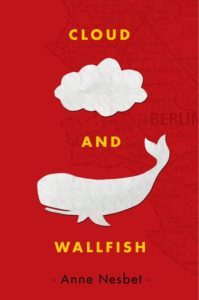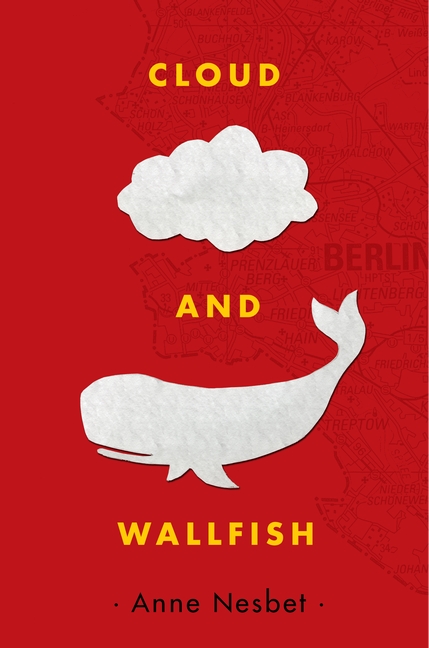craft review by Sonya Doernberg
One of the important decisions we have to make as writers is how to narrate our middle grade story. Using first-person point-of-view allows the reader to see events through the narrator’s eyes. Second-person POV, which is rarely used, makes the reader feel like a character in the story.
The third-person point-of-view, in which the narrator tells us about what’s happening in the story, can be limited or omniscient. According to Study.com Academy, “in third-person limited, the narrator shows us the thoughts and feelings of one character,” at times alternating POVs from chapter to chapter. In third-person omniscient, “the narrator is all-knowing and shows us the inner world of every character that appears.”
 Anne Nesbet choses to tell the story of Cloud and Wallfish in third-person limited through two alternating voices or points-of-view. In the “fiction” chapters, the reader sees events through Noah’s eyes. We learn what it’s like for Noah Keller to all of the sudden become Jonah Brown, to be taken to East Germany without his consent, to be kept in the dark as to what exactly his parents are up to, and to develop a friendship with a mysterious girl he calls Cloud.
Anne Nesbet choses to tell the story of Cloud and Wallfish in third-person limited through two alternating voices or points-of-view. In the “fiction” chapters, the reader sees events through Noah’s eyes. We learn what it’s like for Noah Keller to all of the sudden become Jonah Brown, to be taken to East Germany without his consent, to be kept in the dark as to what exactly his parents are up to, and to develop a friendship with a mysterious girl he calls Cloud.
In “factual” chapters another narrator informs us of historical facts relevant to the preceding chapter. The second narrator has an in-depth knowledge of Noah’s story–at times, she references where we are in the story and other times, informs us of what Noah isn’t aware of that we as readers need to know. 1989 was an important year in German history, and the reader needs to fully understand the political environment and events that lead to the tearing down of the Berlin Wall.
This clever narrator is hardly human. Rather she is a series of “Secret Files” that provide relevant and interesting information, as opposed to encyclopedia-style information.
It’s always a challenge to make historical fiction educational without sounding like a history textbook. This is where Nesbet’s masterful education skills really shine. “Secret Files” is a clever name because its intrigue and spy-like mystery appeal to children, as opposed to, say, “your friendly historian” which can easily translate into “your boring historian.”
Many of us who write historical fiction choose to intersperse relevant historical facts throughout the story, similar to the worldbuilding done in fantasy. Nesbet offers a different approach. Whether it’s a technique you choose to use in your next book, be it historical fiction or fantasy, it’s definitely something to consider.
Action: Try out the “Secret Files” technique. Aim to make your information sections clever and interesting.
What would you call your “Secret Files” and what kind of information would you include in them?


COMMENTs:
0